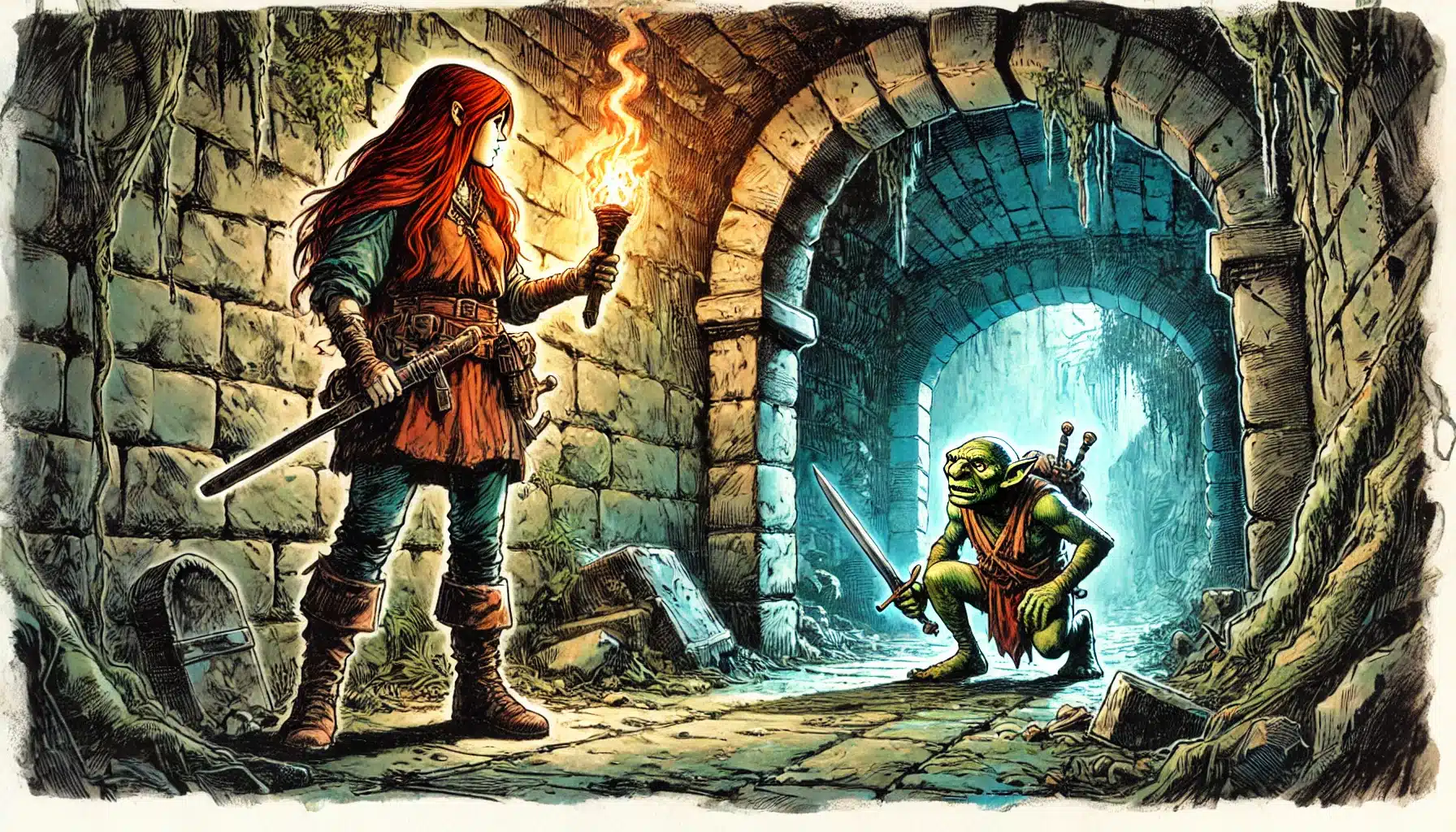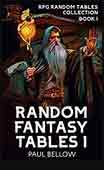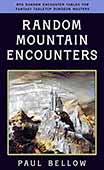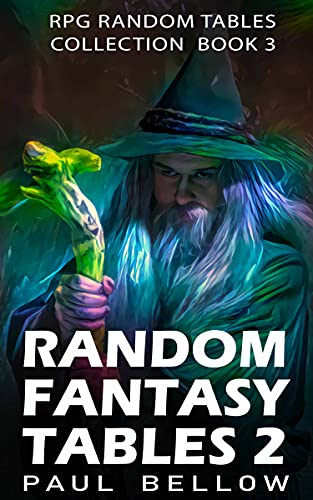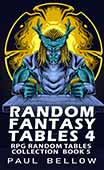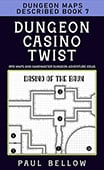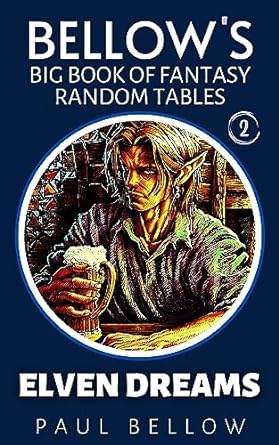Amid the raucous laughter and rolling dice, Dungeons & Dragons combat sessions can easily spiral into a tangled mess of intentions and positions—unless clarity reigns supreme. The need for visual lucidity in battle isn’t just about keeping track of where the bugbear stands; it’s about deepening immersion, making each heartbeat of action more visceral and every tactical decision faster, sharper, and more confident. When players grasp precisely where heroes and monsters clash, their sense of agency soars. They step into their characters’ shoes, not just through dialogue, but by anchoring themselves in the shape and stakes of the battlefield.
A well-visualized combat doesn’t just look orderly; it feels alive. Suddenly, a fireball arcing across the map isn’t just “twenty feet over there”—it’s threatening to engulf the ranger hiding behind a toppled column, while the rogue darts to the flanking position. Sound, motion, and danger snap into focus, empowering quicker decisions and sparking real tension. Confusion vanishes, replaced by that electric rush as strategies form on the fly, and arguments over movement transforms into coordinated action.
But tabletop groups are not one-size-fits-all. Some players relish the freedom and narrative power of theater of the mind, where scenes unfold in shared imagination, detail heightened by words alone. Others prefer the tangible certainty of gridded maps, miniatures, and even 3D terrain—the tactile thrill of measuring a dash, placing spell templates, or positioning a paladin for that crucial attack of opportunity. Veterans and newcomers bring their own tastes, pacing, and needs to the table.
The secret to D&D’s enduring magic is how gracefully it bends to its players and Dungeon Masters. The best visualization style is a living, breathing thing—malleable and adaptive, shaped by party size, complexity, or even the mood of a particular night. Whether you’re drawing dusty maps at a local game store or swapping tokens on a digital battlefield half a continent apart, the right approach is the one that keeps everyone engaged, excited, and in sync.
Core Methods of Combat Visualization
When it comes to painting a picture of battle, DMs and players have an overflowing toolbox. At one extreme lies theater of the mind, that trusted tradition of weaving word-pictures and leaning on collective imagination. Flexible, fast, and utterly portable, it shines with small parties or story-forward play, but its greatest strength—freedom—can double as a breeding ground for confusion if not carefully wrangled.
Swing the pendulum, and you alight on tactical grids. These humble squares, scrawled on blank paper or splashed across vinyl maps, anchor every spell radius and movement speed with geometric precision. Grids and maps bring comfort to tacticians and clarity to chaotic melees, though not without some cost. Prep time rises, DM wrists tire, and story momentum can stutter as enemies are shuffled around, square by square.
Try my AI Tabletop RPG generators...and an extensive library of content!
And then there are the physical delights: painted miniatures poised on the battlefield, tokens or markers standing in for combatants, and 3D terrain that can turn your kitchen table into a ruined keep or sunken crypt. There’s a thrill in the tactile—a feeling that your adventurers truly stride where danger lies. For some, though, sourcing and displaying all these props can spark “analysis paralysis” or threaten pocketbooks.
Finally, digital technology steps onto the stage. Virtual tabletops like Roll20 and Foundry offer gliding tokens, fog of war, dynamic lighting, and even scripted automation. For remote parties or tech-savvy groups, these tools offer amazing detail and hands-off tracking, but demand familiarity with software, stable internet, and patience for technical tangles. Many groups land somewhere in the middle, blending techniques to suit the campaign, the night, or even the mood, forging hybrid approaches that honor both fun and function.
| Method Name | Key Benefits | Potential Drawbacks | Best Use Cases |
|---|---|---|---|
| Theater of the Mind | Maximum flexibility and immersion | Positional confusion, subjective rulings | Small groups, RP-driven sessions, simple encounters |
| Dry-Erase Grid Maps | Precise positioning, easy to update | Setup time, limited visual depth | Large groups, tactical fights, spell-heavy battles |
| 3D Terrain | Highly immersive, visually stunning | Expensive, high prep/storage demands | “Boss fight” set pieces, memorable finales |
| Digital Platforms | Automated tracking, remote-friendly, visuals | Tech barrier, learning curve, screen fatigue | Online/remote play, large maps, dynamic lighting |
| Physical Minis | Tangible sense of scale, collectible appeal | Requires collection, cost, storage issues | In-person campaigns, special occasions |
| Token Markers | Accessible, easy to make and customize | Less visually evocative, limited detail | Quick setup, one-shots, budget-friendly sessions |
Not every party craves the precision of a vinyl grid, nor will every table thrive atop a mountain of acrylic terrain. The most memorable combats are shaped by a DM’s willingness to match visualization to the moment—sometimes sketching a quick map, sometimes describing the clash in cinematic prose, and sometimes splitting the difference. Flexibility and experimentation aren’t just recommended—they’re the lifeblood of a campaign that stays fresh and responsive.
Try new methods, rotate between tools, and don’t be afraid to ask players for feedback after climactic battles. Each group will develop its rhythm, finding the blend of imagination and visual aids that sparks joy, deepens immersion, and keeps the dice—and story—rolling.
⚔️ Fantasy RPG Random Tables Books
Make life as a Gamemaster easier…
If you play Dungeons & Dragons, Pathfinder, or other fantasy RPGs, this
RPG random tables series
is packed with encounters, NPCs, treasure, and more. Available in eBook or print—either way, you’ll have a wealth of adventure ideas at your fingertips.
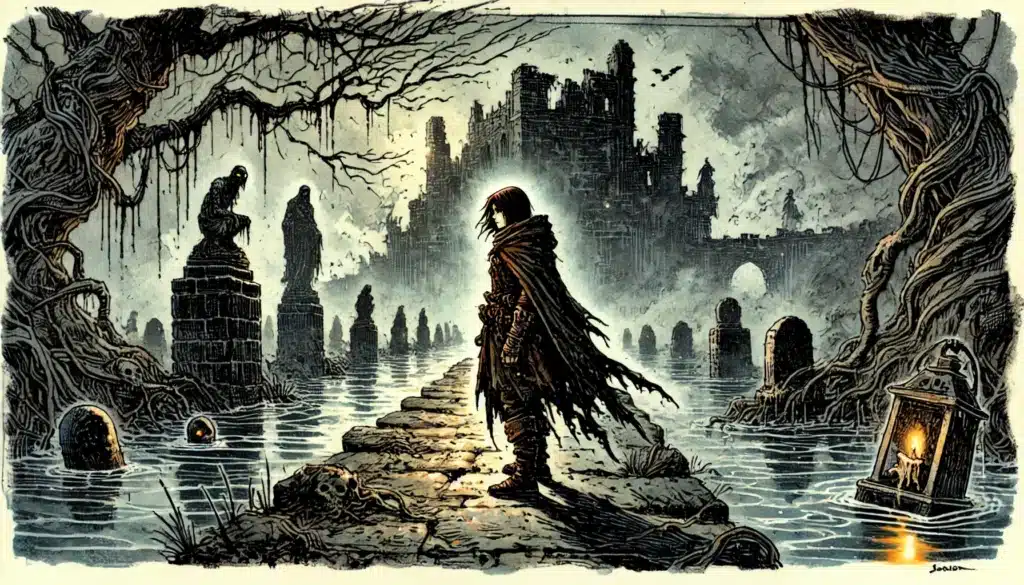
Theater of the Mind: Strengths and Struggles
Theater of the mind is the purest form of D&D storytelling: everything unfolds at the speed of thought, untethered by props or screens, fueled by vivid description and shared imagination. In its best moments, it transforms combat into a living tapestry of drama—heroes leaping from fallen statues, arrows streaking through the gloom, spells bursting with narrative flair. The DM isn’t just a referee, but a maestro conjuring tension and spectacle.
What makes theater of the mind exceptional is that it scales effortlessly to story needs. Want a breathtaking chase through collapsing tunnels? No need to redraw a map; just escalate the narrative. Handling a bar brawl among a dozen patrons? Layer the chaos with quick, punchy summaries. The method’s flexibility encourages bold maneuvers and keeps the focus on stakes, tone, and pacing.
Yet, the system isn’t without pitfalls. Positional confusion lurks whenever distances or lines of sight are vague. Players might argue about who’s flanking, whether that ogre is close enough for an attack, or if a spell can hit all clustered goblins. Area effects and movement speeds become hand-wavy, leading to disputes, attempts at “gotchas,” and sometimes friction between friends.
Mitigating these struggles requires discipline and a toolkit of clear, evocative communication. Consistency is your greatest ally; using spatial analogies (“the fire elemental is as far away as the end of this table”) and regularly summarizing positions lets everyone recalibrate their mental maps. Trust is crucial—the DM’s word is final, but rooting descriptions in familiar, real-world distances or persistent visual anchors helps everyone stay on the same page.
Ultimately, the elegance of theater of the mind shines brightest in simple, fast-paced or emotionally charged encounters, where momentum matters more than geometric fidelity. Using tokens, sketching rough maps, or referencing familiar layouts can supplement the word-pictures and bridge any gaps in visualization.
Tactics to Improve Theater of the Mind Combat Clarity:
- Use visual metaphors: “The dragon’s tail sweeps about door-length away from you.”
- Call out precise distances each turn (“You’re 20 feet from the nearest goblin.”)
- Repeat quick battle summaries every round.
- Assign real-world references (“The bridge is about as wide as this sofa.”)
- Encourage players to ask—then answer—positional clarifications.
- Provide brief handout maps, even if rough sketches.
- Group enemies narratively (“Three skeletons rush together as a pack.”)
- Anchor movement: “Each move puts you closer to the altar by about a short hallway.”
- Mark critical locations verbally (“That pillar gives full cover, 10 feet to your right.”)
- Clarify spell radius by analogies (“Fireball explodes as big as a small car.”)
- Use sound or table props (“I’ll tap the table to show where the ogre is.”)
- Limit movement in narrative chunks (“You can get halfway across the room with one dash.”)
- Note environmental features specifically (“The overturned cart is right behind you.”)
- Announce when positions or numbers change.
- Allow quick retcons if miscommunication occurs.
When should you default to theater of the mind? Socially-driven sessions, small skirmishes, or encounters that hinge on quick, emotional momentum are perfect fits. It keeps play brisk, lets spotlighted moments shine, and avoids bogging down in minutiae.
Save the narrative-only approach for fights without complex area effects, multiple spellcasters, or intricate terrain. When stakes—or party investment—rise, consider supplementing words with sketches, tokens, or player questions to ensure everyone’s imagination stays in harmony.
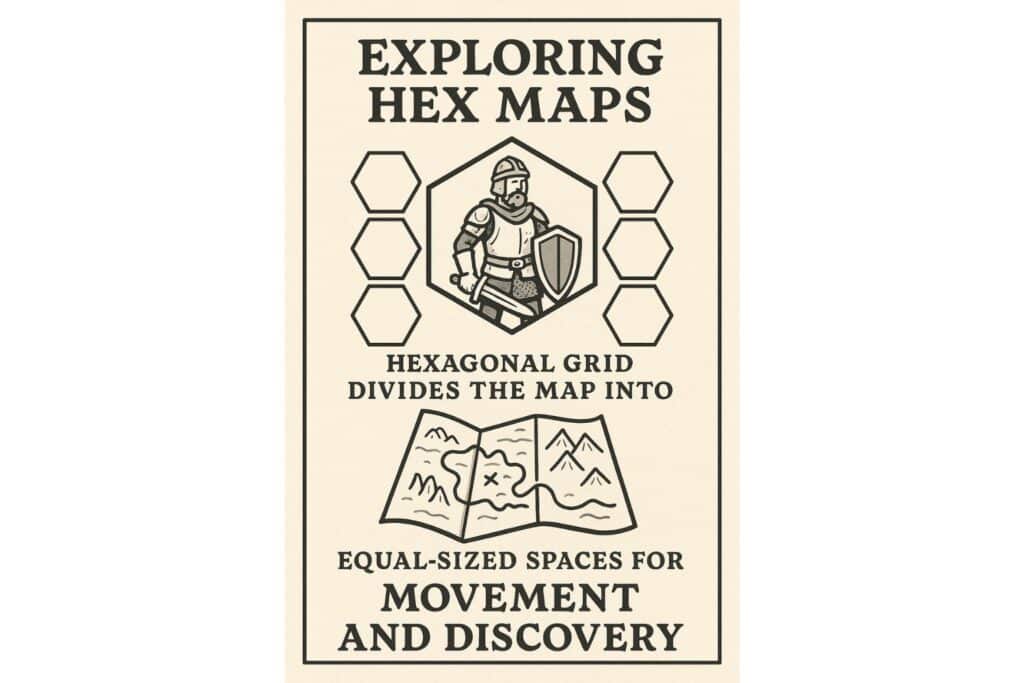
Tactical Maps and Grids
Square by square, tactical combat grids bundle up chaos and impose order. Here, every movement and area effect is crystal clear. A quick glance at a dry-erase mat reveals exactly who’s in the dragon’s breath or which rogue is angling for sneak attack. For many tables, grids provide the comfort of certainty and empower tactical synchronicity between teammates.
Tools range from humble graph paper and vinyl mats to color-printed dungeon tiles. Grids not only support spell measurements or movement tracking, but they also foster teamwork—players plot strategies together, optimizing positioning and cooperative maneuvers. Graphical cues facilitate clever ambushes, zone control, and overlapping effects.
There’s a flip side, of course. Setting up maps, wresting with scale, and deploying markers or minis often eats into session time. DMs can find themselves trapped by prep work: building elaborate layouts only for the players to “go left” instead of into the monster’s lair. For some, the visual elegance is worth it; for others, simplicity beckons.
For groups obsessed with tactical play or learning spatial relationships, maps are invaluable. But there’s a balance to strike between providing useful visual cues and turning each battle into a logistical exercise. Wise DMs swap detail for efficiency, scaling grid complexity up or down as the encounter demands and the players’ familiarity allows.
⚔️ Fantasy RPG Random Tables Books
Make life as a Gamemaster easier…
If you play Dungeons & Dragons, Pathfinder, or other fantasy RPGs, this
RPG random tables series
is packed with encounters, NPCs, treasure, and more. Available in eBook or print—either way, you’ll have a wealth of adventure ideas at your fingertips.
Tactical Visualization Tools and Upgrades:
- Dry-erase mats (vinyl, laminated, etc.)
- Spell area templates (cones, circles, lines)
- 3D terrain pieces (walls, pillars, stairs)
- Pre-printed dungeon tiles
- Magnetic or modular map sets
- Laser pointers for line of sight
- Laser-cut status rings (conditions/effects)
- Removable stickers for hazards/spells
- Initiative tents/trackers (at the table)
- Miniature stands and flight markers (for flying monsters)
- Custom tokens for monsters and NPCs
- Color-coded bases or clips for quick ID
- Standee-style cardboard miniatures
- Pushpins or beads for tracking hidden traps
- Magnetic markers for dynamic hazards
- Laminated overlays for recurring effects (like webs or fog)
- Foldable screen scenery for pop-up terrain
Used wisely, tactical upgrades demystify complicated encounters and thrill visual learners with tangible, interactive combat. Each new element deepens strategy and narrative presence. But beware: an overstocked battlefield can overwhelm newcomers, slow rounds to a crawl, and sap the organic fun from play.
Pick only what enhances flow, and gracefully pare back anything that causes more confusion or setup than it’s worth—the heart of D&D is always in the story, not the set dressing.
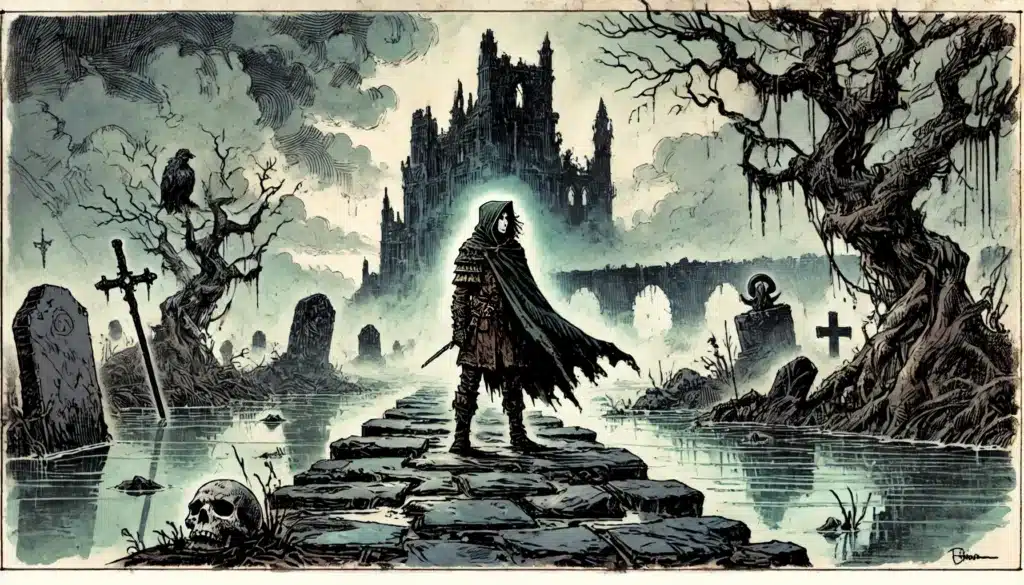
Digital Combat Visualization
Not so long ago, remote play meant fuzzy webcams and hastily-uploaded JPGs. Today, digital tabletops (VTTs) like Roll20, Foundry, or Owlbear Rodeo create lush, interactive battlefields, complete with animated tokens, dynamic lighting, and real-time handouts. For online groups or those riddled with gadgets, digital visualization unlocks a new level of immersion and precision.
Virtual platforms handle everything from fog of war to automated initiative, spell effects, and line of sight. Some, like Foundry, turn maps into living worlds with clickable secrets, visualized spell ranges, or soundscapes. Even simple options—like D&D Beyond’s combat tracker or Owlbear Rodeo’s drag-and-drop interface—streamline group play and tracking.
But every tool has a learning curve. The slicker the visual effects, the more prep time required, and not every player is tech-comfortable. Glitches, internet hiccups, and rule automation can grind momentum or leave someone behind. It’s wise to balance digital “wow” factors with real-world ease of use, focusing on player needs first and feature-stack second.
Online platforms shine for remote parties, huge maps, or resource-tracking-heavy campaigns. There’s no shame in mixing analog with digital, running a quick battle in theater of the mind one session and switching to elaborate VTT layouts the next.
| Platform Name | Features | Learning Curve | Cost |
|---|---|---|---|
| Foundry | Dynamic lighting, deep mods, offline play | Steep | One-time purchase |
| Roll20 | Web-based, automation, asset marketplace | Moderate | Free/Subscription |
| Owlbear Rodeo | Lightweight, easy setup, simple features | Low | Free/Low Donation |
| D&D Beyond Builder | Initiative, monster/hp tracking | Very Low | Free/Integrated |
| Fantasy Grounds | Deep rules integration, licenses needed | High | One-time/Subscription |
For groups new to digital tools, start small. Use basic maps, simple tokens, and only add automation or macros as comfort grows. A beautiful interface can enhance story flow—but only if everyone feels in command, not confused by menus. Adding flair is great, but clarity and speed always top the priority list.
Carefully curate features. When in doubt, simplify—leaving more attention for creative choices, laughter, and the heat of the combat moment.
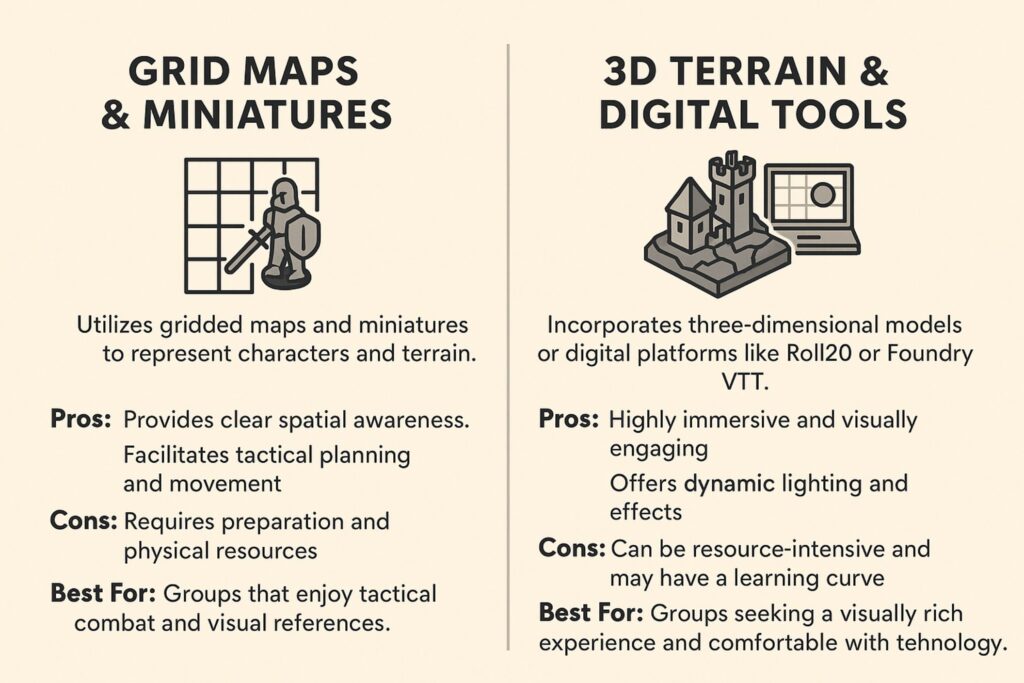
Enhancing Player Understanding and Immersion
The link between visualization and player decision-making is profound. When combat unfolds with clarity—be it through evocative narration or the bite of a crisp map—players make bolder, more inventive choices. Suddenly, charging the ogre or leaping atop a mysteriously glowing altar becomes less a guess and more a gamble worth taking.
Clear visualization glues party coordination together. If everyone grasps the layout—where the cleric stands, how far the minotaur can charge—teamwork tightens. Players set up flanks, coordinate AoE spells, and cover for each other’s weaknesses, all because their mental maps align.
But immersion isn’t just about strategy. It’s an emotional stake in the outcome. When the battlefield makes sense, tension ratchets up—enemies feel close, escape routes feel real, and the drama of each choice lands harder. In combat, clarity is never the antithesis of excitement; it’s the crucible in which excitement is forged.
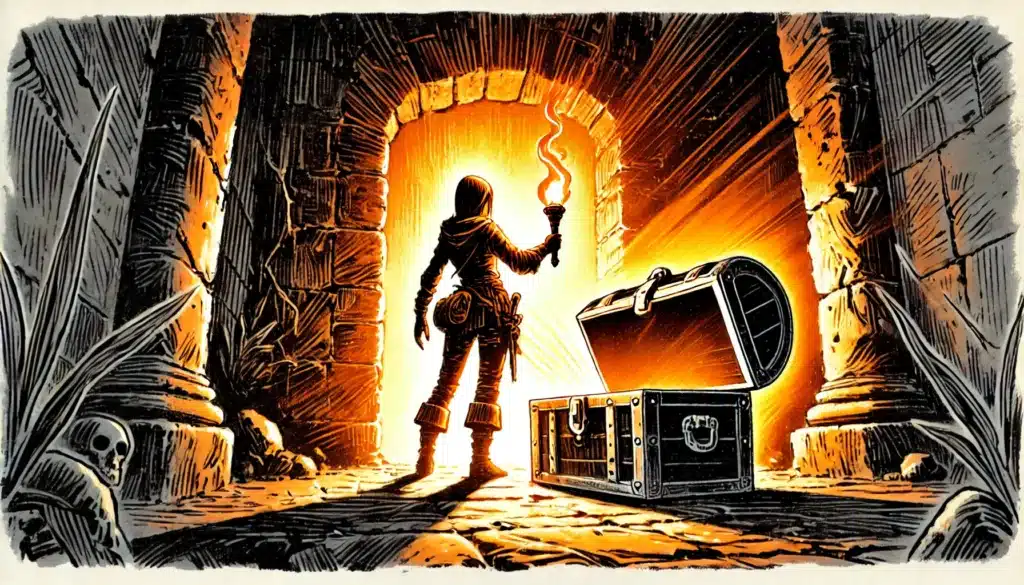
DIY Solutions for Better Visualization
You don’t need a king’s ransom in wargaming gear to create an evocative combat scene. The best DMs are creative tinkerers, cobbling together worlds out of household odds and ends. LEGO bricks might become improvised barricades, coins can serve as monster markers, and colored yarn could trace the blast radius of a devastating fireball.
Try my AI Tabletop RPG generators...and an extensive library of content!
The humble notebook or whiteboard can morph into a legendary battlefield, erasing and redrawing positions with dizzying speed. Cardboard tiles and makeshift tokens get the job done, leaving budget for snacks—or, perhaps, a single well-loved figurine. A little ingenuity invites everyone into the creative process, forging a collaborative spirit that’s just as exciting as any high-dollar accessory.
The secret? Combine these humble props with storytelling. Elevate a bottle cap from “goblin” to “the one with the blood-red cowl who started the fire.” Invite players to physically move their ‘stand-ins’ if they wish. Keep things tactile and the table comes alive, regardless of investment.
DIY isn’t just about saving money—it’s about keeping combat accessible, nimble, and customizable. If you need a river, draw one; if you need a bridge, a strip of blue tape or ruler will suffice. Reusable, adaptable, and ever so charming, low-cost solutions focus the group’s energy on choices, not on upstaging the local hobby shop.
DIY Visualization Tools:
- Coins for monsters, NPCs, or treasure
- LEGO for walls, pillars, or barricades
- Bottle caps as enemy indicators
- Colored yarn or string for spell radii and boundaries
- Graph paper or notebooks for drawn layouts
- M&Ms or dry pasta for area effects
- Whiteboards and dry-erase markers for flexible grids
- Sticky notes for environmental hazards
- Cardboard cutouts or tiles for rooms or terrain features
- Game pawns or board game pieces as standees
- Poker chips as HP counters or minions
- Recycled plastics shaped into obstacles
- Paperclips for swarms or status conditions
- Binder clips to stand up flat tokens
- Erasers or dice as impromptu objects
- Small boxes or blocks for elevation changes
- Cloth scraps for bodies of water or magical zones
Improvise, adapt, and reuse. The most memorable battles aren’t built from expense, but from creativity and the sense of resourceful camaraderie that grows around a lively table.
Clarity is king, not cost. Invest where it matters most: in communication and fun, not in gear that complicates or distracts from the heart of play.
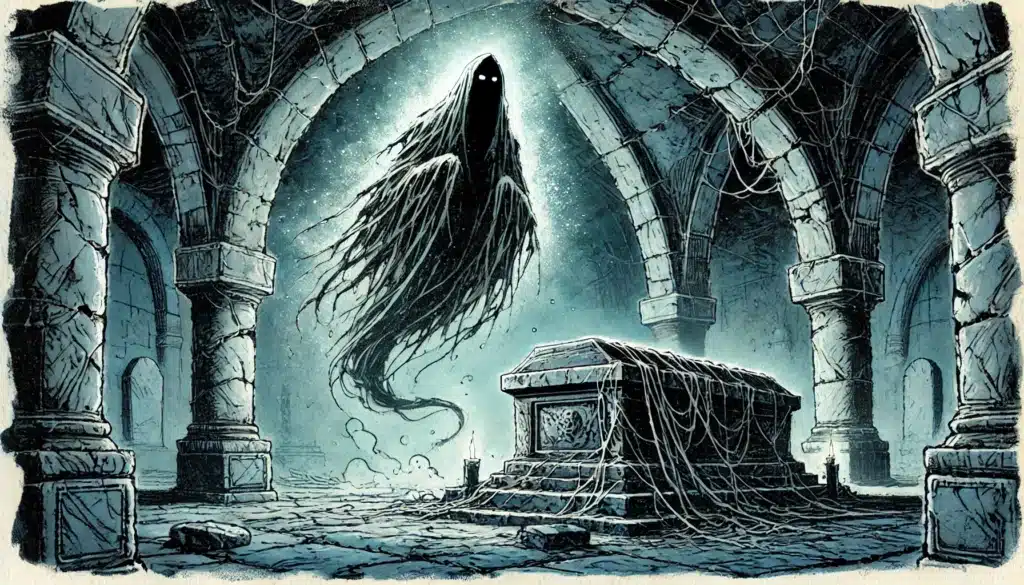
Visual Clarity and Combat Pacing
Visual aids should be a boon, not a bottleneck. Overloading the table—digital or physical—with too much detail can mire combat in decision fatigue, robbing it of momentum. A spell radius shouldn’t prompt a five-minute debate; a movement should be clear, not debated ad nauseam. Wise DMs know when to sharpen the focus—and when to zoom out, abstracting away low-stakes specifics for the sake of brisk, energizing play.
A crisp, controlled battlefield keeps things lively. “Useless” movement or terrain details can be skipped, enemy minions grouped, and complexity abstracted as needed. When action stalls, don’t be afraid to summarize, condense, or gloss over antics that drag down the pace.
Savvy DMs deploy simple pacing tools: tokens for turn order, status rings to track ongoing magic, and visible initiative trackers that eliminate “whose turn is it?” time loss. If monster tokens begin to fade with HP, or different monster types are color-coded, confusion shrinks—and drama grows.
The key? Keep your eyes on the prize: fast, clear, flavorful combat. When a tool threatens to swallow more time than it saves, retire or simplify it. Let the excitement and narrative drive play, not the logistics.
Pacing-Focused Visualization Tips:
- Use initiative trackers (tents, magnets, or digital displays)
- Assign player tokens/markers to keep seating order visible
- Group enemies into squads to resolve actions faster
- Fade or flip monster tokens as they’re wounded
- Skip movement for non-critical NPCs/background minions
- Color-code monster tokens by type or threat level
- Display active conditions on the map (rings, standups, tokens)
- Pre-place ongoing area effects with clear markers
- Abstract visible terrain if it doesn’t affect current choices
- Prep “status cards” to hand out for buffs/debuffs
- Remove dead/defeated tokens immediately to clear visual clutter
- Give players summary maps after any major battlefield shift
- Use short “position check” summaries every other round
- Prioritize clear, fast hand signals or cues over excessive dialogue
Always re-evaluate your visual aids. If something consistently slows play, strip it down or swap it out. Remember: the aim is to spotlight tactical choices and drama—not to drag each battle into a marathon.
Combat visualization should serve the story, not drown it in detail. Let the table breathe, and the pace will thrive.
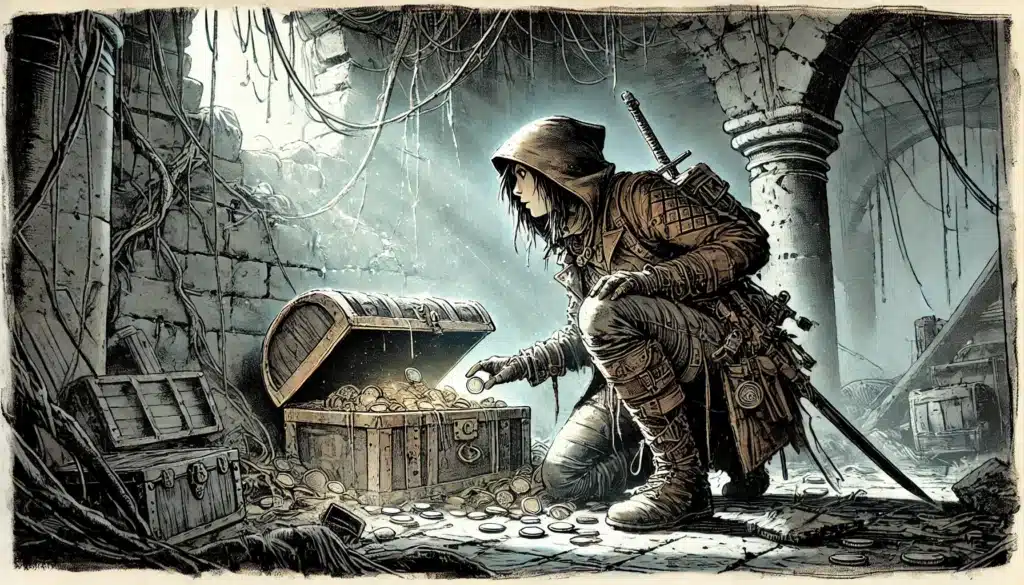
Final Thoughts on Visual Combat
At its best, visual combat transforms the table into a crucible of strategy and storytelling—a playground where every fight is a test of both wits and teamwork. The tools and techniques outlined here are not a menu of “better or worse,” but a spectrum of options, each lending its own hues to the scene. Your DM style, your players’ needs, and the moment’s stakes will guide this balancing act between ruthless precision and wild imagination.
No two tables—nor any two encounters—will need identical approaches. You might use a full 3D set for the climactic dragon’s lair, shift to theater of the mind for a scrappy goblin ambush, and mix maps with tokens for the rest. The true artistry isn’t in picking one “best” method, but in tailoring the approach to the moment, the group, and the evolving spirit of play.
⚔️ Fantasy RPG Random Tables Books
Make life as a Gamemaster easier…
If you play Dungeons & Dragons, Pathfinder, or other fantasy RPGs, this
RPG random tables series
is packed with encounters, NPCs, treasure, and more. Available in eBook or print—either way, you’ll have a wealth of adventure ideas at your fingertips.
Don’t shy from constant experimentation. Check in with your players after big fights: did the tactics and visualization work? Were there points of confusion or delay? Adjust, evolve, and be unafraid of swapping tools mid-campaign if habits grow stale.
Visual aids aren’t about chasing perfection or dazzling with technology. They’re about clarity—ensuring every player feels empowered, engaged, and confident in their choices. The map, token, or tool that builds understanding and heightens excitement is infinitely more valuable than the most elaborate terrain no one knows how to use.
Above all, let fun be your compass. If a tool supports story, speeds play, and deepens immersion, adopt it wholeheartedly. If it frustrates, discard it. The heart of D&D is not in its miniatures or software, but in the collective act of creation that happens every game night. Clarity, creativity, and camaraderie outshine any painted figure or glowing screen.

